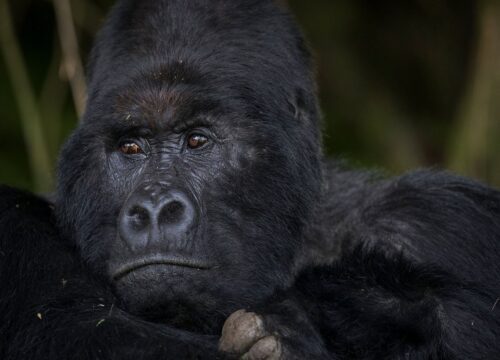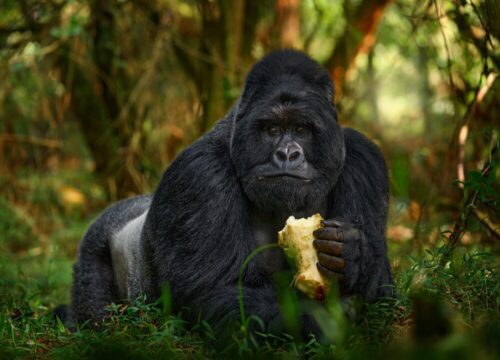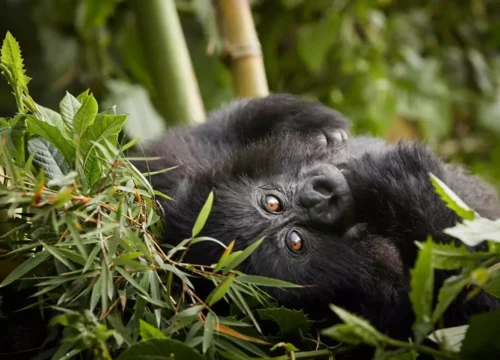Tarangire National Park Safari Guide | Wildlife, Costs and Tips
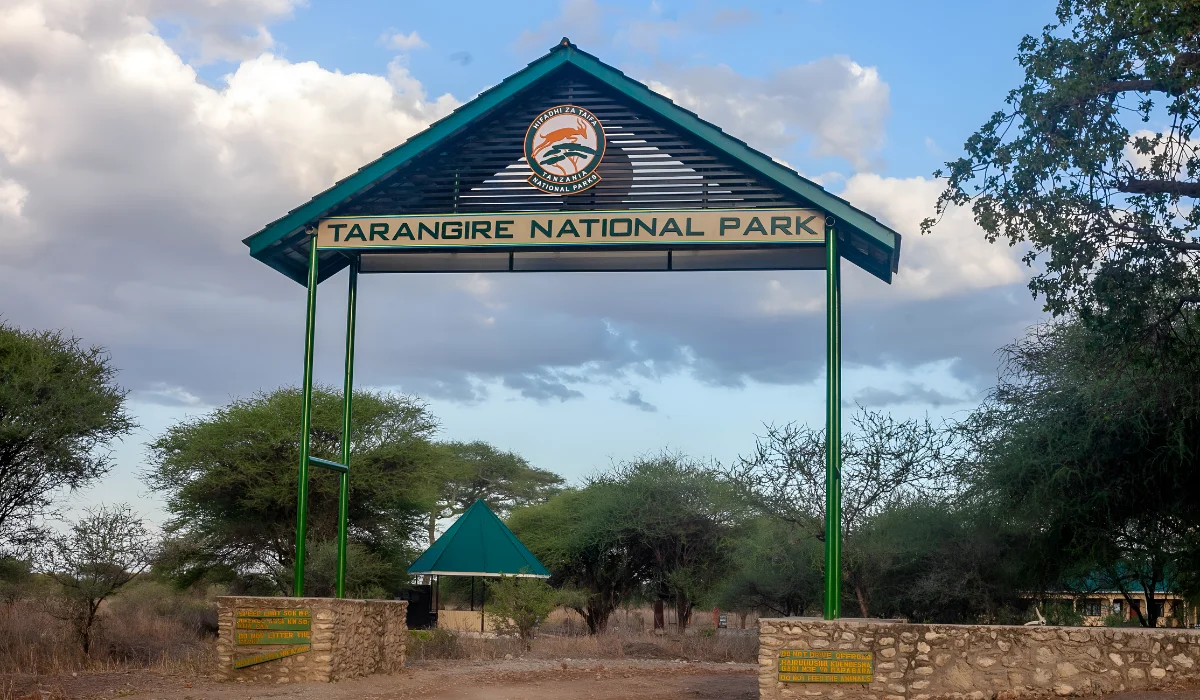
Tarangire National Park is one of Tanzania’s most underrated safari gems. Often overshadowed by the more famous Serengeti and Ngorongoro, this park quietly delivers some of the most authentic, uncrowded, and wildlife-rich safari experiences in East Africa. For travelers seeking fewer vehicles, close-up elephant encounters, and striking baobab-studded landscapes, Tarangire National Park offers an unforgettable alternative.
Located in northern Tanzania, just two hours’ drive from Arusha, Tarangire National Park spans over 2,850 square kilometers and forms part of the greater Tarangire ecosystem. The park is named after the Tarangire River, which cuts through its heart and becomes a life-giving source of water during the dry season. Between June and October, this river transforms Tarangire National Park into a magnet for wildlife — drawing massive elephant herds, thousands of zebras and wildebeests, and predators like lions, leopards, and hyenas.

But Tarangire National Park isn’t just about the dry season. The green season reveals a different kind of beauty: lush plains, migratory birdlife, and quieter camps. The park is home to over 550 bird species, making it one of the most diverse birding destinations in East Africa. From lilac-breasted rollers to yellow-collared lovebirds and giant ostriches, bird lovers are never disappointed here.
Perhaps the most iconic image of Tarangire National Park is the giant baobab trees that dot the landscape like ancient watchtowers. These colossal, almost mythical trees can live for over 1,000 years and serve as nesting sites, food sources, and shade for both wildlife and humans. No visit to Tarangire is complete without pausing beneath a towering baobab to feel the timelessness of the African bush.
Unlike busier parks like the Serengeti, Tarangire National Park retains an off-the-beaten-path feel. Game drives here often feel exclusive, and it’s not uncommon to witness elephant herds in complete silence, without another vehicle in sight. This intimacy with nature is one of the park’s most cherished features, especially for photographers, honeymooners, or returning safari-goers looking to escape the crowds.
Whether you’re beginning your northern circuit adventure or looking for a quieter stop after the Serengeti, Tarangire National Park offers something uniquely powerful: space, silence, and soul-stirring encounters with nature at its most raw. It’s not just a stopover — it’s a destination worth exploring in depth.
Where is Tarangire National Park Located?
Tarangire National Park is located in northern Tanzania, approximately 118 kilometers (about 2 hours) southwest of Arusha, the safari hub for most Northern Circuit itineraries. It lies just south of Lake Manyara National Park and east of the Great Rift Valley Escarpment, forming part of a larger migratory ecosystem that stretches into Lake Burunge, Mkungunero Game Reserve, and the Maasai Steppe.
Interactive Map of Tarangire National Park
Below is an interactive map showing the location of Tarangire National Park, nearby towns, airstrips, and connections to other major safari destinations in Tanzania.
The park is part of the Manyara Region, and is easily accessible by road and air, making it an ideal first or last stop on a Northern Tanzania safari circuit. Most travelers visiting Tarangire National Park begin their journey in Arusha, either arriving via Kilimanjaro International Airport (JRO) or Arusha Airport (ARK), both of which serve as major gateways for domestic and international flights.
For those driving from Arusha, the road is paved and passes through several local towns, offering a scenic introduction to rural Tanzania. In just under two hours, you’ll arrive at the main gate of Tarangire National Park, where the landscape quickly shifts from village farmlands to baobab-dotted savannah and dense acacia woodland.
If you’re combining parks on a longer itinerary, Tarangire National Park fits seamlessly into routes that include Lake Manyara, Ngorongoro Crater, and Serengeti National Park. It’s particularly favored at the start of a safari, as its proximity to Arusha allows travelers to ease into the wilderness before continuing into deeper parts of the northern circuit.
The park is also accessible by air via the Kuro Airstrip, which receives scheduled and charter flights from Arusha, Serengeti, and Zanzibar. This fly-in option is ideal for luxury travelers or those with limited time who want to maximize their hours on safari.
Whether you drive or fly, arriving in Tarangire National Park feels like entering a world apart. The moment you pass through the park gates, you’re greeted by open plains, elephant tracks in the dust, and the looming shadows of ancient baobab trees — a strong indication that you’ve reached one of Tanzania’s most magical landscapes.
Why Visit Tarangire National Park?
Tarangire National Park may not be the most famous park in Tanzania, but for many seasoned safari-goers, it becomes a favorite. What makes Tarangire National Park special is not just its impressive density of wildlife, but the quieter, more immersive safari experience it offers. This is where you can watch elephants dusting themselves beneath colossal baobab trees, listen to lions roar across a valley at sunset, or witness thousands of animals converge on a riverbed in the dry season — all without the traffic and pressure of larger, busier parks.
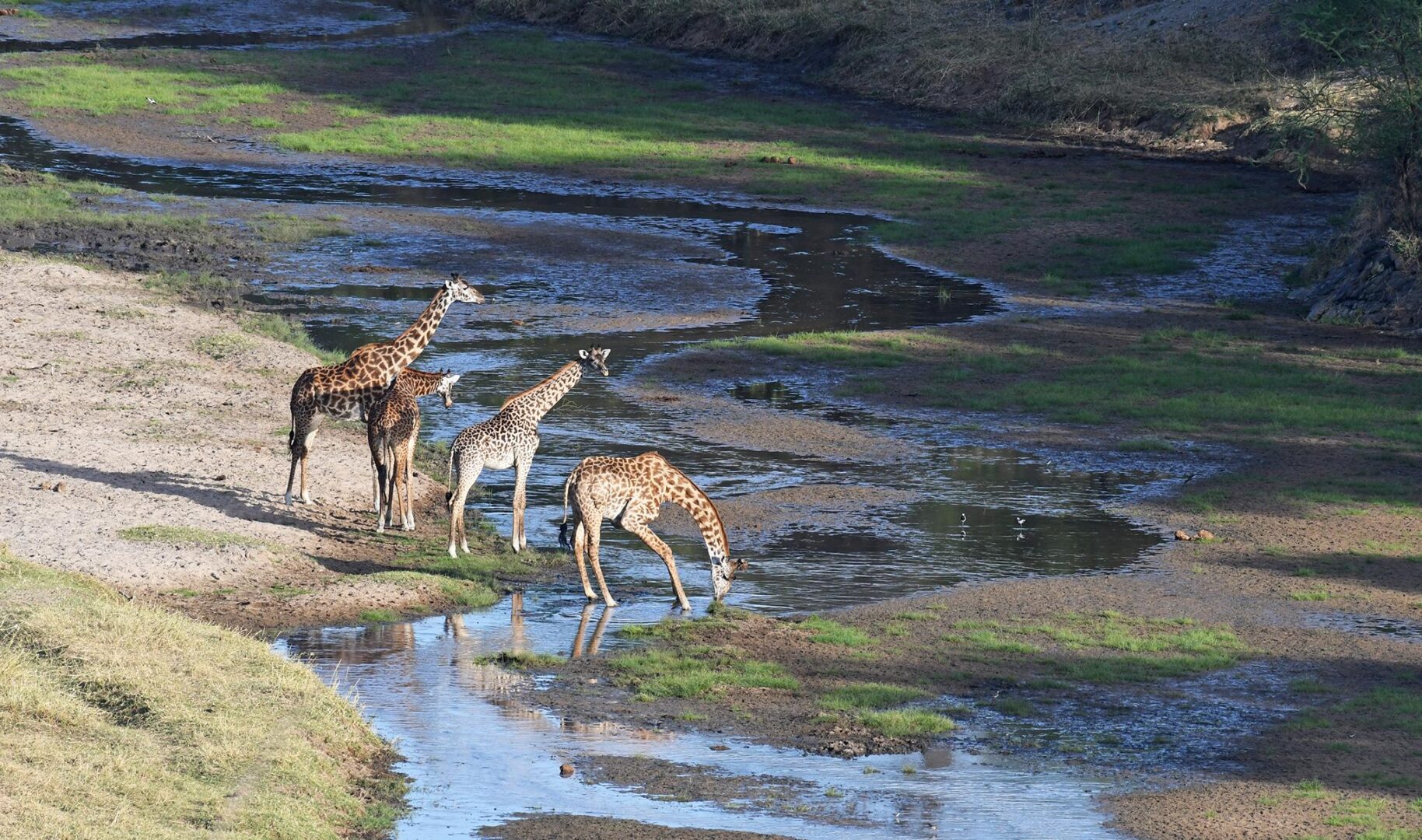
One of the primary reasons to visit Tarangire National Park is its enormous population of elephants. In fact, Tarangire is home to one of the largest elephant concentrations in East Africa. During the dry season, it’s not unusual to see herds of up to 300 elephants in one day, gathered around the life-sustaining Tarangire River, which remains one of the only permanent water sources in the region. The sight of massive elephants bathing, playing, and nurturing their young in a dust-red landscape is something few places on Earth can match.
But elephants are just the beginning. Tarangire National Park boasts a rich array of wildlife, including lions, leopards, cheetahs, giraffes, wildebeests, zebras, warthogs, and more. It’s also one of the best places in Tanzania to spot rarer animals like the fringe-eared oryx and the long-necked gerenuk. Birdwatchers will find paradise here too, as the park hosts over 550 bird species, from striking bee-eaters and hornbills to ground-dwelling kori bustards and flocks of bright lovebirds in the trees.
Yet what truly sets Tarangire National Park apart is the sense of space and solitude. The park remains blissfully quiet compared to Serengeti or Ngorongoro, especially during the shoulder seasons. Game drives here often feel more intimate, more personal — as if the wilderness is yours alone. For photographers, it offers unobstructed views of wildlife against dramatic skies and baobab silhouettes, making it a dream location for capturing powerful images.
Then there are the baobab trees — ancient giants that dominate the skyline and lend Tarangire its timeless, otherworldly charm. Some of these trees are believed to be over 1,000 years old, standing like natural monuments to the park’s wild history. Watching the golden sun set behind one of these majestic baobabs while elephants move slowly across the horizon is an experience that defines the romance of safari.
Another unique reason to visit Tarangire National Park is its dry-season migration, which peaks from June to October. During these months, animals from surrounding areas — including the Maasai Steppe and Lake Manyara ecosystem — funnel into Tarangire in search of water, creating one of the highest wildlife densities in the country. It’s like a mini-migration, offering incredible diversity without the crowds of the Serengeti.
For those who value authenticity, raw beauty, and wildlife in large numbers but few vehicles, Tarangire National Park is a must. Whether you include it as a short stop at the beginning of your safari or linger for several days in one of the park’s remote lodges, Tarangire delivers something rare: space to breathe, time to observe, and a front-row seat to some of Africa’s finest wildlife spectacles — without feeling like a tourist.
Wildlife in Tarangire National Park
The wildlife in Tarangire National Park is among the most spectacular in all of Tanzania — and yet, it often surprises first-time visitors with just how unique and varied it is. While many people arrive expecting only elephants and baobabs, they quickly discover that Tarangire National Park is a thriving ecosystem filled with predators, rare antelope species, vibrant birdlife, and dramatic dry-season congregations that rival the more famous parks of East Africa.
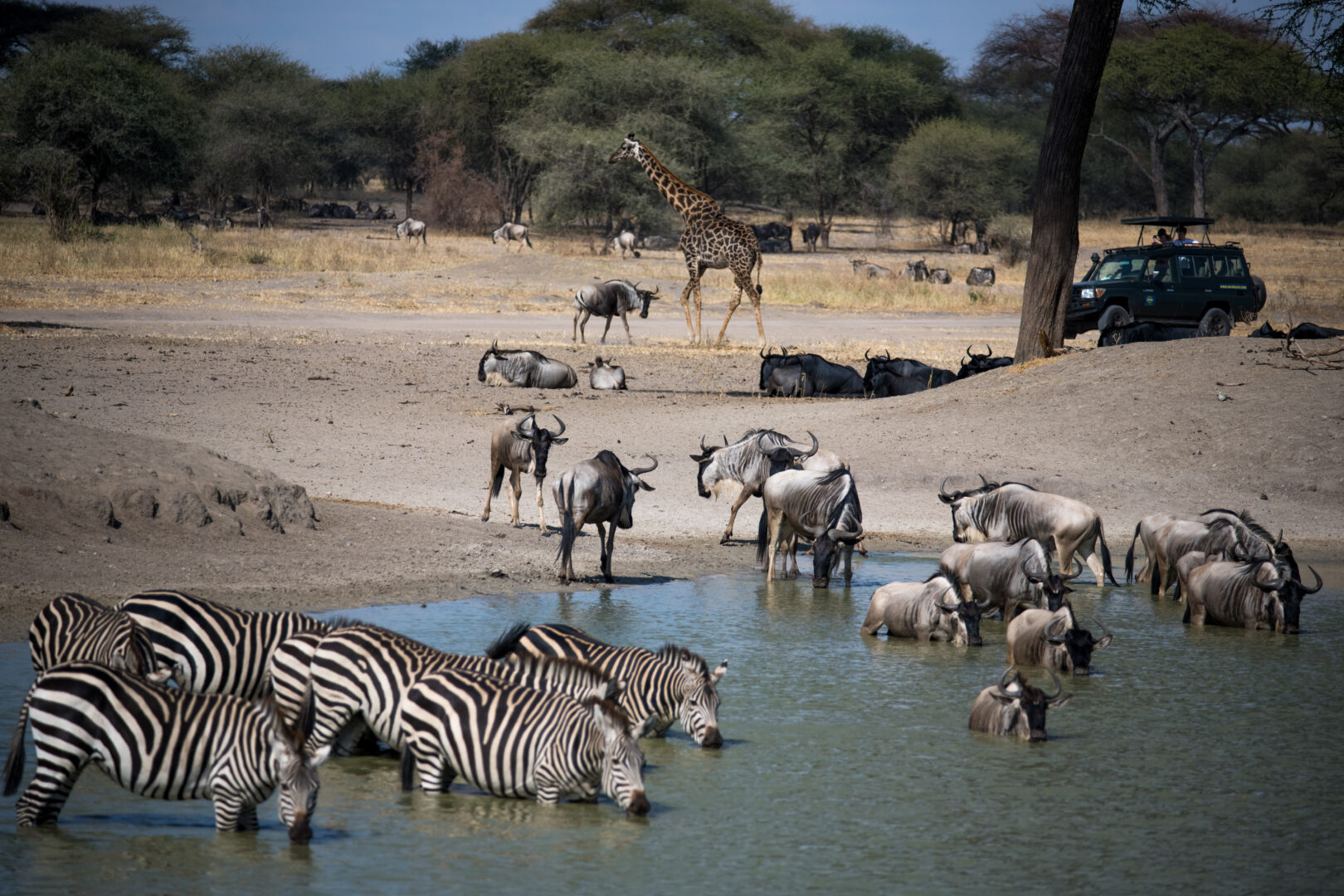
Perhaps the single most iconic image of Tarangire National Park is that of a massive elephant herd gathered along the banks of the Tarangire River. With herds of up to 300 elephants — sometimes more — the park boasts one of the highest elephant concentrations in Tanzania. These intelligent giants migrate from the surrounding ecosystem to access the river and remaining waterholes during the dry season, providing extraordinary viewing opportunities from June through October.
Beyond the elephants, Tarangire National Park is home to all the classic African wildlife you’d expect. Lions are regularly seen lounging under acacia trees or stalking zebra and wildebeest herds. Leopards, though elusive, are often spotted in the denser riverine forests. Cheetahs are occasionally seen hunting in the more open southern plains of the park, and hyenas are ever-present, patrolling the edges of wildlife gatherings for easy meals.
What makes Tarangire National Park truly exceptional, however, is its population of rare and regionally unique species. This is one of the few places in Tanzania where you have a good chance of spotting the fringe-eared oryx, a beautifully built antelope adapted for arid terrain. The long-necked gerenuk, which stands on its hind legs to reach high branches, can also be found here, though sightings require some luck and a sharp-eyed guide.
Buffaloes, giraffes, warthogs, impalas, dik-diks, and Grant’s gazelles are abundant and often seen together in mixed herds. Waterbucks and reedbucks prefer the marshy areas, while bushbucks lurk along the river’s edge in the denser foliage. Warthogs scurry through the grasslands, tails raised like antennae, and troops of olive baboons dominate the woodlands with their noisy social behavior.
One of the hidden gems of Tarangire National Park is its astonishing birdlife. With over 550 recorded bird species, the park is a haven for both amateur and professional birdwatchers. Among the most sought-after sightings are the yellow-collared lovebird, which nests in baobabs, the vulturine guineafowl, the ashy starling, and the giant lappet-faced vulture. During and after the rains, seasonal wetlands attract flamingos, pelicans, and storks, while colorful bee-eaters, rollers, and hornbills light up the skies and trees year-round.
Another seasonal highlight is Tarangire’s mini-migration. During the dry months, animals from the Maasai Steppe and beyond converge in Tarangire National Park for water. This influx results in massive mixed-species congregations along the riverbanks — a dramatic spectacle rarely seen outside the Serengeti ecosystem. The interaction between predators and prey becomes especially intense as lions, leopards, and hyenas take full advantage of the concentration of game.
Because Tarangire National Park receives fewer visitors than Serengeti or Ngorongoro, the wildlife experience often feels more intimate. Game drives tend to be quieter, sightings are less competitive, and you may find yourself watching a pride of lions or a herd of elephants for an hour — without another vehicle in sight.
Whether you’re a first-time safari traveler or a returning wildlife enthusiast, Tarangire National Park delivers animal encounters that are just as rich, raw, and wild as anywhere else in Africa. It’s a park where patience is rewarded, the unexpected happens daily, and nature shows off in its purest form.
Best Time to Visit Tarangire National Park
Tarangire National Park is a year-round safari destination, but the best time to visit depends on what kind of wildlife experiences you’re seeking. While the park remains open and accessible throughout the year, seasonal changes in rainfall and vegetation dramatically affect the landscape and animal behavior. Understanding these seasonal dynamics can help you plan the most rewarding safari possible.
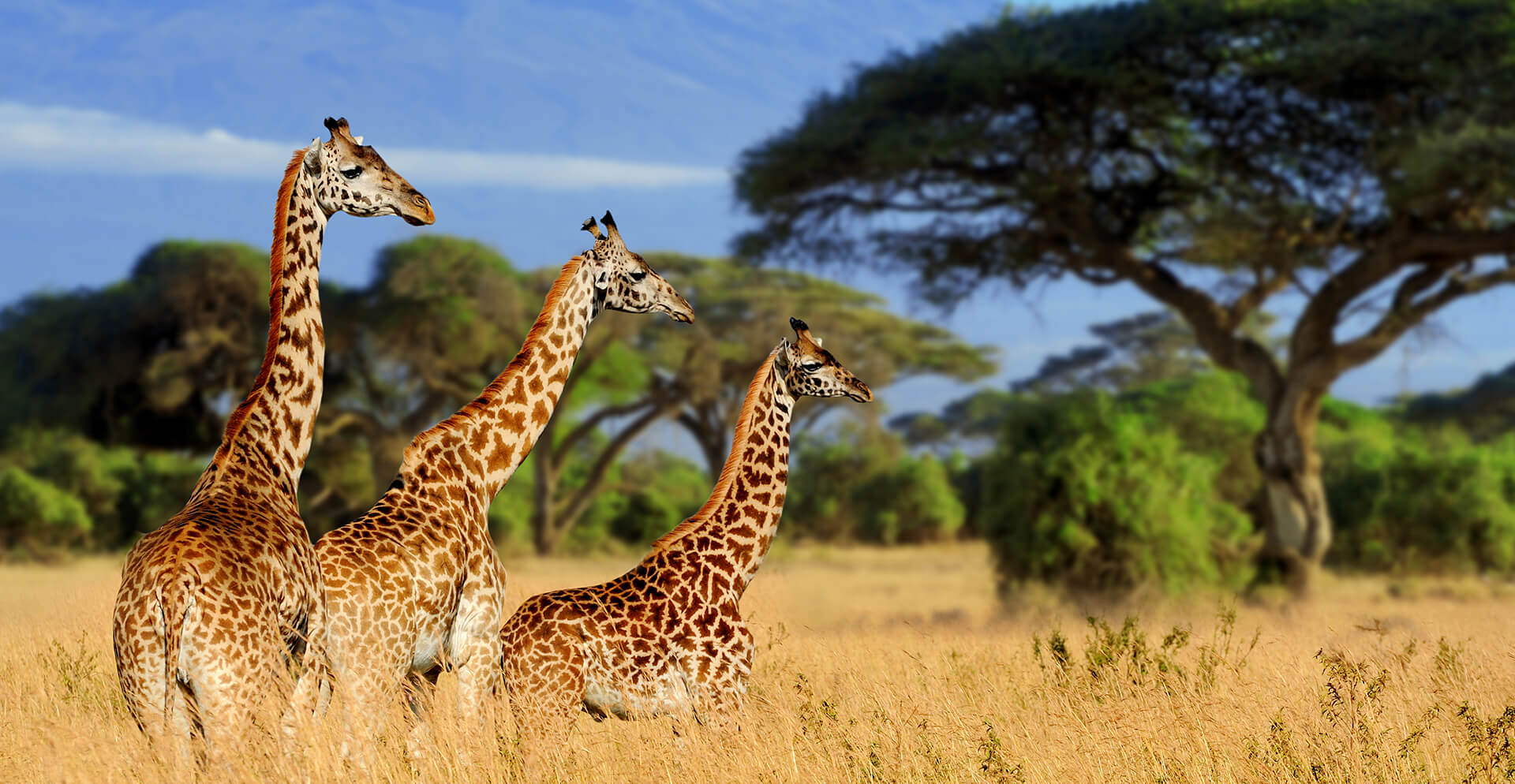
For many travelers, the dry season, which runs from June to October, is considered the best time to visit Tarangire National Park. During these months, water becomes scarce in the surrounding ecosystem, and the Tarangire River becomes the main — and often the only — reliable source of water for miles. As a result, thousands of animals migrate into the park, transforming it into a wildlife hotspot.
This dry season concentration creates one of the highest densities of wildlife in Tanzania outside the Serengeti during migration season. Massive elephant herds — sometimes numbering in the hundreds — gather along the riverbanks to drink, bathe, and socialize. Lions follow the movement of buffalo and zebra herds, and the chances of predator-prey interactions rise significantly. This period also offers excellent visibility, as the dry grasses recede and animals are easier to spot across the open plains.
From a practical standpoint, game drives during the dry season are also more comfortable. The weather is generally warm and sunny with little to no rain, and the roads are dry and easy to navigate. The skies are clear — perfect for photographers hoping to capture golden light at sunrise or dramatic sunsets over baobab silhouettes.
On the other hand, the green season, from November to May, reveals a completely different side of Tarangire National Park. After the first rains fall in November, the landscape transforms from dusty browns to lush, vibrant greens. Wildflowers bloom, migratory birds arrive, and the park becomes a paradise for birdwatchers and photographers seeking bold contrast and moody skies.
Although wildlife disperses during the rainy months, the park doesn’t go empty. Resident animals remain, and game viewing — while more challenging — is still rewarding for those with patience. Moreover, the green season brings fewer visitors, which means you’ll enjoy more privacy at lodges and on game drives, often at reduced rates. It’s also the calving season for many herbivores, making it a fascinating time to witness new life — and the predators that come with it.
For serious birders, January through April is particularly rich, as over 550 bird species — including migratory and endemic species — can be seen in full breeding plumage. Flamingos, storks, pelicans, and dozens of raptors frequent the park’s seasonal wetlands, providing rare viewing opportunities for avian enthusiasts.
While Tarangire National Park can be visited any time of the year, it’s important to align your travel with your interests. If you’re visiting for elephants and classic wildlife density, the dry season from June to October is your window. If you seek green landscapes, birds, photography, or fewer crowds, then the November to May period offers its own special rewards.
No matter when you visit, Tarangire National Park will surprise and inspire you. Its rhythms follow nature, not a calendar — and every season offers a different chapter of its ever-evolving story.
Best Time to Visit Tarangire National Park Summary
| Season | Months | Safari Highlights |
|---|---|---|
| Dry Season | June – October | Best time for wildlife viewing. Elephants, predators, and large herds gather at the Tarangire River. Ideal weather and visibility. |
| Green Season | November – May | Lush landscapes, birdwatching, calving season. Fewer tourists and great photography opportunities. Occasional rains. |
Tarangire Safari Types: Group, Private, and Luxury Options
Planning your safari to Tarangire National Park involves more than just choosing dates — it’s about selecting the right safari style that fits your budget, travel preferences, and the kind of experience you want to have. Fortunately, Tarangire National Park offers a variety of safari types that cater to different travelers, whether you’re a solo backpacker, a couple on honeymoon, a family, or a high-end safari enthusiast.
Each safari type offers unique benefits in terms of cost, exclusivity, and flexibility. Understanding the differences between group safaris, private safaris, and luxury fly-in safaris will help you decide how best to explore the beauty and wildlife of Tarangire National Park.

Group Joining Safaris
Group safaris are one of the most popular and cost-effective ways to experience Tarangire National Park, especially for solo travelers or those on a tighter budget. These tours typically depart on fixed dates from Arusha and combine several national parks — including Lake Manyara, Ngorongoro, and Serengeti — with a 1–2 day visit to Tarangire.
You’ll share a 4×4 safari vehicle with other travelers, which helps reduce the overall cost. The itinerary is fixed, and accommodations are usually in midrange lodges or budget tented camps. While you may sacrifice a bit of flexibility, group safaris offer great value and a social, community-oriented experience.
Private Safaris
Private safaris offer more comfort, flexibility, and personalization. If you’re traveling as a couple, family, or small group, a private safari allows you to choose your own dates, accommodations, and activities within Tarangire National Park. You’ll have a dedicated driver-guide and vehicle, which means game drives can follow your pace and preferences.
This is an ideal option for photographers, birdwatchers, or anyone who wants a more tailored and relaxed experience. Private safaris also allow you to include cultural visits or spend more time in off-the-beaten-path parts of the park — something group tours often can’t accommodate.
Luxury Fly-In Safaris
For those seeking exclusivity and comfort, luxury fly-in safaris to Tarangire National Park are an exceptional option. These safaris begin with a short scenic flight from Arusha to Kuro Airstrip, placing you right in the heart of the park within minutes. From there, you’ll transfer directly to a luxury lodge or tented camp offering top-tier amenities, gourmet meals, and panoramic views.
Luxury camps often provide private game drives, guided walking safaris, sundowners, and night game drives — all with a high level of personalized service. These experiences are perfect for honeymooners, VIP travelers, or anyone wanting an unforgettable escape in the wild, without sacrificing comfort.
Tarangire National Park Safari Types and Costs | Which Safari Is Right for You?
| Safari Type | Ideal For | Key Features | Approx. Cost (USD) |
|---|---|---|---|
| Group Safari | Budget travelers, solo guests | Fixed departure dates, shared vehicle, set route | $150–$250 per day |
| Private Safari | Families, couples, photographers | Flexible dates, private guide, custom itinerary | $250–$450 per day |
| Luxury Fly-In Safari | Luxury travelers, honeymooners | Charter flight, luxury lodge, private services | $700–$1200+ per day |
Tarangire Safari Itineraries
Planning the right itinerary is essential to making the most of your visit to Tarangire National Park. Whether you’re fitting Tarangire into a packed Northern Circuit adventure or dedicating a full trip to this elephant-rich wilderness, your experience will vary greatly depending on how many days you spend in the park and what kind of safari you’re after.
Because of its close proximity to Arusha, Tarangire National Park is incredibly flexible — you can visit it in a single day, as part of a multi-park circuit, or as a standalone destination for a quieter, in-depth wildlife experience. Below are sample itineraries that suit different travel styles and timeframes, from day-trippers to long-haul safari travelers.
1 Day Tarangire Safari from Arusha
This is the most popular option for travelers with limited time who still want to experience a classic African safari. Departing early from Arusha, you’ll drive through the Maasai countryside and arrive at the main gate of Tarangire National Park in under two hours. Once inside, enjoy a full-day game drive along the Tarangire River, where elephants, zebras, and giraffes gather in large numbers.
After a picnic lunch under a baobab tree, continue your game drive through the woodlands and savannahs before returning to Arusha in the late afternoon.
Ideal for: Business travelers, weekend visitors, or those combining a short Tarangire stop with Kilimanjaro or Zanzibar.
2 Days Tarangire & Lake Manyara Safari
This short but impactful itinerary combines the best of Tarangire National Park with nearby Lake Manyara, famous for its tree-climbing lions and flamingos. Day one focuses on Tarangire’s massive elephant herds and baobabs, while day two takes you to Lake Manyara’s lush forested ecosystem and alkaline lake.
This circuit is great for travelers who want to experience two very different habitats in just a weekend, with one overnight stay in Mto wa Mbu or Karatu.
3 Days Tarangire Safari (With Walking Safari Option)
This itinerary is perfect for travelers who want a deeper, more relaxed experience in Tarangire National Park. You’ll stay in or near the park for two nights, giving you time to explore remote areas, enjoy slower-paced game drives, and even go on a walking safari in designated zones (with armed ranger support).
Staying longer means you can catch the park’s quieter moments — a herd of elephants crossing a dried riverbed at sunrise or a leopard stalking from the shadows at dusk. Walking safaris offer a ground-level look at the ecosystem, revealing animal tracks, bird nests, medicinal plants, and more.
5 Days Tarangire, Ngorongoro & Lake Manyara Circuit
This mid-length itinerary delivers three very different safari experiences in one compact trip. You’ll begin with 2 days in Tarangire National Park, then head to Lake Manyara National Park, and finish with a full-day game drive inside the Ngorongoro Crater — one of the most biodiverse locations in Africa.
This route is especially popular with photographers and travelers seeking a well-rounded itinerary without rushing into Serengeti. It offers excellent wildlife diversity, beautiful scenery, and cultural stops in the local villages of Mto wa Mbu and Karatu.
7 Days Northern Tanzania Safari Including Tarangire
For those with a full week, this itinerary explores the top four parks in Northern Tanzania: Tarangire National Park, Lake Manyara, Ngorongoro Crater, and Serengeti National Park. Tarangire usually serves as the starting point, offering a quieter, elephant-filled introduction to the wild.
After two nights in Tarangire, you’ll move through Manyara and Ngorongoro, then finish with two or three nights in the Serengeti. This route balances crowd levels, game viewing, and landscapes, making it one of the most popular safari circuits in East Africa.
Custom Tarangire Safari Itineraries with Nextgen Safaris
At Nextgen Safaris, all our Tarangire National Park safari itineraries can be customized to match your dates, travel preferences, and budget. Whether you want to focus on photography, include cultural visits, fly between parks, or go fully off-grid in a luxury tented camp — we’ll craft a personalized journey for you.
Let us know if you’d like to:
- Extend your safari into Serengeti or Zanzibar
- Add walking safaris or night drives
- Include cultural visits with the Maasai or local communities
- Travel as part of a group or in full privacy
Lodges and Camps in Tarangire National Park
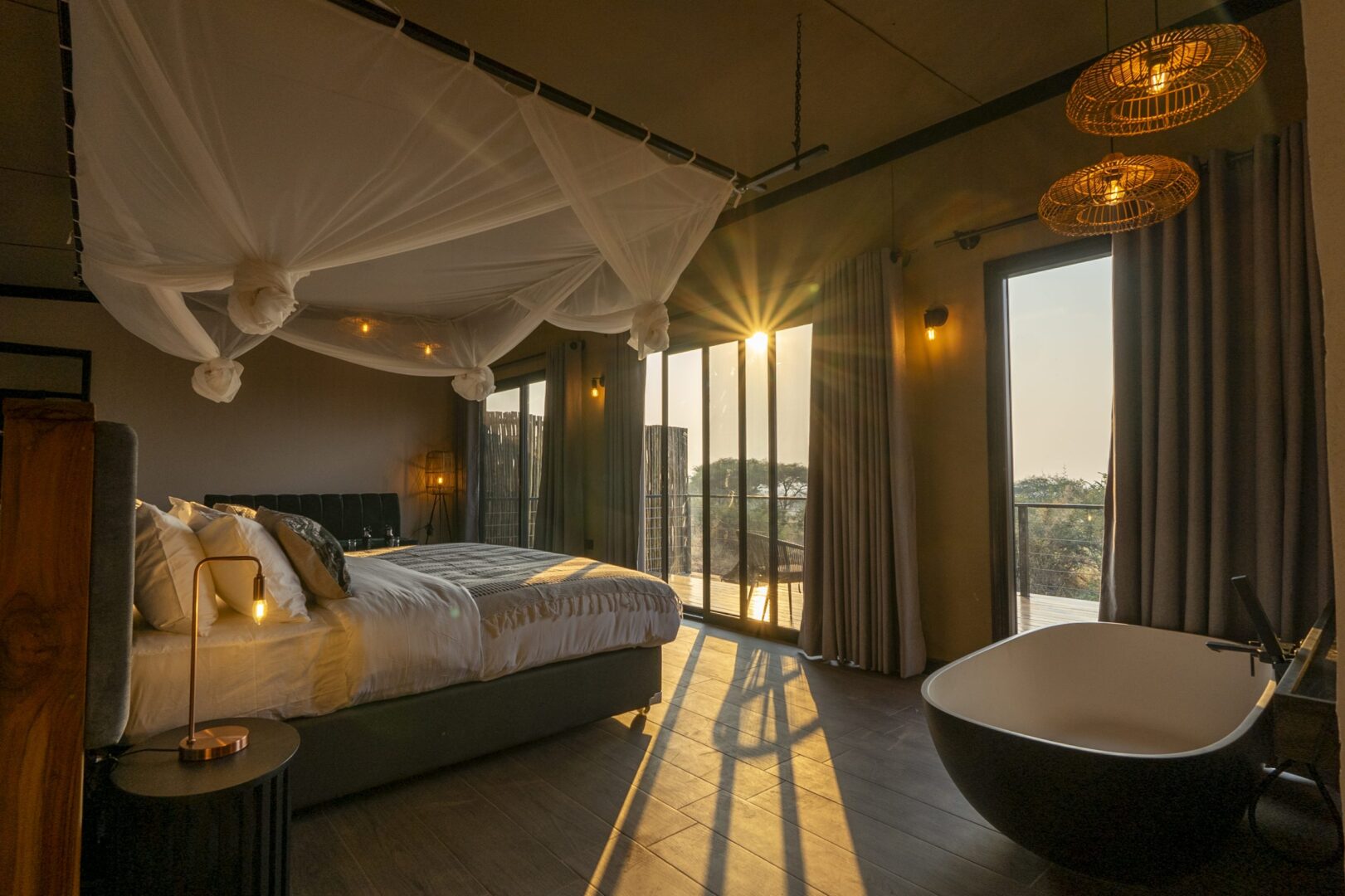
One of the most rewarding parts of visiting Tarangire National Park is spending the night immersed in its remote, baobab-studded wilderness. From luxury tented camps with sweeping savannah views to budget-friendly eco-camps nestled under acacia trees, the park offers accommodation options for every kind of traveler. Whether you’re seeking honeymoon luxury or authentic bush camping, Tarangire National Park has the perfect place to rest after a day of adventure.
To help you decide where to stay in Tarangire, here’s a detailed look at the best lodges and camps, organized by luxury, midrange, and budget categories.
Luxury Lodges and High-End Tented Camps
If you’re looking for comfort, privacy, and personalized service, the luxury accommodations inside or around Tarangire National Park deliver unforgettable experiences with elegant safari style. Many of these lodges offer:
- Private verandas with wildlife views
- Gourmet bush dining
- Exclusive access to remote game-viewing zones
- Optional fly-in access via Kuro Airstrip
Top luxury options include;
1. Tarangire Treetops by Elewana
Built into ancient baobab and marula trees just outside the park, this unique lodge offers treehouse-style rooms with expansive decks, oversized beds, and a luxurious open-air feel. It’s a favorite among honeymooners and VIP travelers.
2. Lemala Mpingo Ridge Lodge
Perched on an escarpment overlooking the Tarangire River, Lemala offers panoramic views, contemporary tented suites with plunge pools, and a top-tier safari experience with access to both day and night game drives.
3. Sanctuary Swala Camp
Located in a private part of the park, this camp features twelve luxurious canvas pavilions with indoor/outdoor bathrooms and views over a natural spring where elephants often drink. The setting is tranquil and wild.
Midrange Lodges and Tented Camps
For travelers who want comfort and good service without the luxury price tag, these midrange accommodations balance value, quality, and great locations for exploring Tarangire National Park. Most offer en-suite tents or thatched chalets, excellent meals, and well-trained guides.
Recommended midrange options:
1. Tarangire Simba Lodge
Located just outside the Sangaiwe Gate, this eco-conscious lodge features tented rooms with thatched roofs, outdoor showers, and a small pool with sweeping views over the plains.
2. Lake Burunge Tented Camp
Overlooking Lake Burunge, this lodge is ideal for combining birdwatching with easy access to both Tarangire and the Maasai Steppe. It features large walk-in tents on raised decks and serves as a peaceful retreat after dusty game drives.
3. Whistling Thorn Camp
This small camp is located in a community-managed area bordering the park and offers immersive, culturally rich experiences with solid comfort and excellent guiding.
Budget Camps and Affordable Options
If you’re on a tight budget but still want to enjoy the wildlife wonders of Tarangire National Park, there are several excellent value-for-money options, especially outside the park gates. These camps offer basic but clean facilities, warm service, and access to shared safari vehicles.
Best budget-friendly stays:
1. Zion Campsite and Lodge
A great choice for backpackers and overland groups, this budget campsite near Tarangire’s main gate offers both tents and basic cottages, with local meals and a friendly vibe.
2. Sangaiwe Tented Lodge (Budget Wing)
Sangaiwe offers a lower-cost accommodation option with simpler tents, making it a solid pick for travelers who want to stay close to the park without breaking the bank.
3. Manyara Wildlife Safari Camp
Although located closer to Lake Manyara, this lodge is frequently used by budget travelers visiting Tarangire on combo itineraries. It provides en-suite rooms, a pool, and sweeping Rift Valley views.
How to Choose Where to Stay in Tarangire National Park
When choosing accommodation in Tarangire National Park, consider:
- Your safari style: Do you want a classic tented experience, eco-conscious comfort, or five-star luxury?
- Location: Lodges inside the park allow for early access to game drives, while those outside are often more affordable but require extra drive time.
- Season: Some camps close during the long rains (April–May), while others offer low-season discounts during the green season.
- Activities: Certain lodges offer night drives, walking safaris, or cultural tours — a great way to enhance your stay.
Whether you’re visiting Tarangire for one night or spending several days exploring its remote corners, the right lodge or camp can elevate your entire safari experience. At Nextgen Safaris, we work with the top-rated accommodations in every budget category and help match you with the perfect place to suit your itinerary and travel preferences.
How to Get to Tarangire National Park
Getting to Tarangire National Park is surprisingly easy, especially if you’re starting your safari from Arusha, Tanzania’s main safari gateway. Whether you prefer to travel by road or by air, the park is accessible year-round and can be reached comfortably in just a few hours. This makes Tarangire National Park an ideal first stop on any northern circuit itinerary, especially for those who want to dive straight into game viewing on Day One.
By Road from Arusha
Most travelers reach Tarangire National Park by road from Arusha, a distance of approximately 118 kilometers (73 miles). The drive takes around 2 to 2.5 hours, depending on traffic and road conditions. The route is fully paved up to the park gate, passing through scenic Maasai villages, dry riverbeds, and rolling savannahs.
The most commonly used entrance is the Main Tarangire Gate, although other access points like Sangaiwe Gate and Matete Gate are used for lodges and camps situated along the western and northern boundaries.
Self-drive options are available for experienced travelers, but most visitors opt for guided safaris with private drivers or group safari vehicles arranged through licensed tour operators like Nextgen Safaris. Having a guide ensures smooth navigation, help with park entry permits, and deeper insights into the landscapes and wildlife along the way.
By Air – Fly-in Safaris to Tarangire
For a faster and more luxurious arrival, fly-in safaris to Tarangire National Park are available from major airports and safari destinations across Tanzania. The park is served by the Kuro Airstrip, located near the center of the park and used primarily by guests staying at high-end lodges and camps.
Domestic flights to Kuro Airstrip are operated by regional carriers such as Coastal Aviation, Auric Air, and Regional Air. Flights depart daily from:
- Arusha Airport (ARK) – 30–45 minutes
- Seronera (Central Serengeti) – 1 hour
- Zanzibar (ZNZ) – 1.5 to 2 hours
- Dar es Salaam (DAR) – 2 to 2.5 hours
Once you land at Kuro Airstrip, your lodge or camp will arrange a short game-drive transfer to your accommodation, allowing you to start wildlife viewing immediately upon arrival.
Fly-in safaris are ideal for:
- Travelers with limited time
- Luxury travelers staying in remote lodges
- Safari-goers looking to avoid long road transfers
Combined Routes with Other Parks
Tarangire National Park is often combined with Lake Manyara, Ngorongoro Crater, and the Serengeti to form a classic Northern Tanzania safari circuit. The order of your route may depend on flight availability, seasonal wildlife movement, and lodge bookings.
A common overland route looks like this:
Arusha → Tarangire → Lake Manyara → Ngorongoro Crater → Serengeti → Fly back to Arusha or Zanzibar
Distances from Tarangire to other parks:
- Tarangire to Lake Manyara – 70 km / 1.5 hours
- Tarangire to Ngorongoro Crater – 165 km / 3.5 hours
- Tarangire to Serengeti (Naabi Gate) – 285 km / 6 to 7 hours
These drives are scenic and often include game viewing and cultural stops along the way, such as the village of Mto wa Mbu or local Maasai bomas.
Park Entry Gates and Logistics
There are three main entry points into Tarangire National Park:
- Main Gate (Most common) – Near the Tarangire River and ideal for central access
- Sangaiwe Gate – Often used for southern and western camps
- Matete Gate – Alternative gate for guests staying on the northern boundary
Your tour operator will select the appropriate gate based on your lodge location and route. All visitors must pay the Tarangire National Park entrance fee, which is typically included in your tour package.
Whether you drive or fly, the journey to Tarangire National Park is part of the adventure. From the moment you enter the park, the landscape shifts — dry riverbeds, towering baobabs, and elephant tracks mark your arrival in one of Tanzania’s most scenic and untamed safari destinations.
Park Entry Fees, Costs & Permit Information for Tarangire National Park
Understanding the entry fees and permit costs for Tarangire National Park is essential for budgeting your safari in Tanzania. Whether you’re booking an all-inclusive package or planning a self-drive adventure, these fees are regulated by the Tanzania National Parks Authority (TANAPA) and apply to all visitors.
Tarangire’s park fees are collected daily and contribute directly to the conservation and management of wildlife, park infrastructure, and local community support programs. While most tour operators include these fees in the overall price of your safari, it’s still helpful to know exactly how the costs are structured.
Current Park Entrance Fees (TANAPA Rates)
All fees are per person, per 24-hour period, and are subject to 18% VAT (Value Added Tax). These rates apply as of the latest update and may change annually.
| Visitor Category | Entry Fee (USD) | With 18% VAT |
|---|---|---|
| Foreign Adults (16+ years) | $70 | $82.60 |
| Foreign Children (5–15 years) | $20 | $23.60 |
| Children Under 5 Years | Free | |
Additional Safari Costs in Tarangire National Park
In addition to entry fees, there are other possible costs, depending on the type of safari you book:
- Concession Fee: Applies if you’re staying in a camp or lodge inside the park. This is usually $59 per person per night (incl. VAT) for foreign guests.
- Vehicle Entry Fee: Paid by your safari company. Private vehicles may be charged separately if you’re self-driving.
- Night Game Drive Permit: Night drives are only allowed through authorized lodges and require a special permit and TANAPA guide. Expect to pay $59–$75 per person.
- Walking Safari Permit: For guided walks within designated areas of Tarangire, expect fees from $35–$50 per person, depending on lodge policies and duration.
What’s Included in Most Safari Packages?
If you book with a licensed tour operator like Nextgen Safaris, most of the following are already included in your quoted price:
- Daily park entry fees
- Concession fees for inside-the-park lodges
- Full-board accommodation
- Game drives in a 4×4 vehicle with a professional guide
- Transfers to and from Arusha or other parks
- Bottled water and packed lunches during drives
It’s always good to ask your operator for a detailed cost breakdown to ensure that all park-related charges are covered and that there are no surprises when you arrive.
Payment Tips for Independent Travelers
If you’re visiting Tarangire National Park independently (e.g., self-driving), you must:
- Pay at the park gate using a credit or debit card (cash is not accepted)
- Present a valid passport for identity and fee verification
- Ensure your vehicle has a valid TANAPA entry permit and clearance
All payments go through the TANAPA payment system, which is standardized across Tanzania’s national parks.
Whether you’re on a shoestring budget or enjoying a luxury fly-in safari, understanding the entry and permit system helps you appreciate where your money goes — directly into protecting the wildlife, landscapes, and communities that make Tarangire National Park one of Africa’s greatest safari treasures.
Tarangire vs Serengeti – Which Park Should You Choose?
When planning a safari in northern Tanzania, many travelers face a difficult choice: Tarangire National Park vs Serengeti National Park. Both parks offer unforgettable wildlife encounters and breathtaking landscapes, but they provide very different safari experiences. Understanding the differences between Tarangire and Serengeti can help you choose the right destination — or decide how to combine both for a full northern circuit safari.
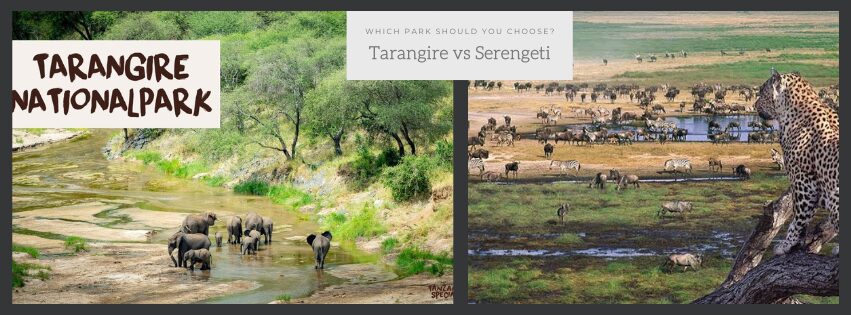
Wildlife & Game Viewing
Both parks are teeming with animals, but their wildlife experiences are shaped by different ecosystems and seasonal movements.
Serengeti National Park is best known for the Great Migration, where over 1.5 million wildebeests, zebras, and gazelles move in search of fresh grazing. The migration offers spectacular predator-prey action, especially during river crossings in the north (July–October) and calving season in the south (January–March). The Serengeti is also famous for its big cat sightings, especially lions and cheetahs.
Tarangire National Park, on the other hand, doesn’t host the Great Migration — but it does offer one of the largest elephant populations in Tanzania. During the dry season (June–October), thousands of animals from surrounding areas congregate along the Tarangire River, creating incredible game-viewing opportunities. You’ll also find unique species like the fringe-eared oryx and long-necked gerenuk, rarely seen in the Serengeti.
Verdict:
- Choose Serengeti for the migration and predator action.
- Choose Tarangire for elephants, dry-season wildlife density, and fewer crowds.
Crowds and Safari Experience
Serengeti is one of the most famous safari destinations in Africa. Its reputation draws thousands of tourists each year, especially during the migration peak. While the park is massive, popular areas like Seronera can feel crowded in high season, especially around dramatic wildlife sightings.
Tarangire National Park, by contrast, remains quiet and uncrowded, even in peak season. It’s possible to watch a pride of lions or a herd of 100 elephants without seeing another vehicle for hours. The sense of space and solitude in Tarangire makes for a more intimate safari experience, particularly valued by photographers, birdwatchers, and seasoned safari-goers.
Verdict:
- Choose Tarangire for peaceful game drives and fewer vehicles.
- Choose Serengeti if you’re okay with more visitors in exchange for iconic sightings.
Landscapes and Scenery
Serengeti National Park is dominated by wide, open plains that stretch as far as the eye can see — a true “endless plain,” as its name suggests. You’ll also find granite kopjes, acacia woodlands, and seasonal rivers. It’s cinematic and dramatic in scale.
Tarangire National Park offers a more varied and lush landscape, especially striking for its towering baobab trees, rolling hills, and grassy river valleys. The scenery changes dramatically with the seasons, from dry, dusty bushland to green, vibrant plains after the rains.
Verdict:
- Choose Serengeti for iconic plains and dramatic scale.
- Choose Tarangire for baobabs, river scenes, and seasonal variety.
Activities and Safari Styles
In Serengeti, most safaris focus on game drives, with options for hot air balloon rides and cultural visits at the park’s borders. Walking safaris are rare and usually happen outside the park.
Tarangire National Park allows for more offbeat experiences, especially from lodges in or near the park that offer walking safaris, night drives, and community-based tourism. This adds depth to your itinerary and brings you closer to the natural world.
Verdict:
- Choose Tarangire for a more active and diverse experience.
- Choose Serengeti for classic full-day game drives and migration tracking.
Cost Considerations
Serengeti safaris tend to be more expensive, especially due to its size, remote location, and the need for fly-in access to avoid long road transfers. Luxury accommodations inside Serengeti can also be significantly pricier.
Tarangire National Park is closer to Arusha, reducing transport costs, and offers a range of budget to luxury accommodations. It’s a smart choice for travelers seeking value without sacrificing wildlife quality.
Verdict:
- Choose Tarangire if you’re on a tighter budget or short on time.
- Choose Serengeti for a premium, once-in-a-lifetime migration-focused experience.
Tarangire National Park vs Serengeti National Reserve
| Category | Tarangire National Park | Serengeti National Park |
|---|---|---|
| Wildlife Highlight | Elephants, dry-season herds, rare species | Great Migration, big cats, wildebeests |
| Crowd Levels | Low, peaceful, fewer vehicles | Moderate to high, especially during migration |
| Activities | Game drives, walking safaris, night drives | Game drives, hot air balloons |
| Accessibility | 2 hrs from Arusha by road | 6–8 hrs by road or 1 hr flight |
| Budget Suitability | Ideal for budget and midrange safaris | More costly; best for longer itineraries |
So, Tarangire or Serengeti?
If you’re short on time, value peaceful game drives, and want to see elephants and rare species up close — choose Tarangire National Park.
If you’re planning a bucket-list trip centered around the Great Migration and don’t mind higher costs or more tourists — choose Serengeti National Park.
But the truth is, you don’t have to choose. Many of the best itineraries combine both parks, giving you a rich, varied safari experience that highlights the best of northern Tanzania.
Conservation and Responsible Tourism in Tarangire National Park
Tarangire National Park is not only a sanctuary for elephants, lions, and ancient baobabs — it’s also a living symbol of what thoughtful conservation can achieve. As human populations grow, land becomes scarcer, and climate patterns shift, protected areas like Tarangire are increasingly vital. That’s why conservation and responsible tourism play such an essential role in keeping this ecosystem healthy, balanced, and biodiverse.
Every time a traveler enters Tarangire National Park, pays their park fees, and stays at a locally supported lodge, they contribute directly to preserving one of East Africa’s most unique landscapes. Tourism — when done responsibly — fuels a sustainable cycle that supports both wildlife and the people who live around the park.
Protecting Wildlife and Habitats
Tarangire is home to one of the largest elephant populations in East Africa, but its importance goes far beyond any single species. The park protects over 2,800 square kilometers of grasslands, wetlands, woodlands, and acacia savannas — all of which support a complex web of life.
Conservation efforts inside Tarangire National Park focus on:
- Anti-poaching patrols to protect elephants, big cats, and endangered antelopes
- Habitat preservation, especially seasonal migration corridors for wildlife
- Research partnerships that monitor population health, animal movements, and human-wildlife interaction
- Community-based programs that involve local people in conservation
Thanks to these efforts, species such as the fringe-eared oryx and the lesser kudu — which are rare or absent in other parks — have managed to maintain a presence in Tarangire.
Community Involvement and Eco-Tourism
Conservation isn’t just about animals — it’s about people too. The success of Tarangire National Park depends on strong relationships with the communities that live around its boundaries. Many of these are Maasai and Mbugwe families who have coexisted with wildlife for generations.
Responsible tourism in Tarangire supports communities through:
- Employment at eco-lodges, camps, and ranger services
- Cultural tourism initiatives such as village visits, storytelling sessions, and traditional dance performances
- Revenue-sharing models, where a portion of every park fee goes back into local schools, clinics, water projects, and conservation education
- Community-owned conservancies that act as wildlife buffer zones and offer alternative income sources to farming and herding
When you travel with a tour operator that supports these principles — like Nextgen Safaris — your trip doesn’t just create memories, it creates opportunities.
How Travelers Can Contribute to Conservation
As a guest in Tarangire National Park, you have an important role to play. Responsible travel means making small, conscious decisions that collectively have a big impact. Here’s how you can contribute:
- Stay on designated tracks during game drives to avoid soil erosion and habitat damage
- Avoid single-use plastics by bringing refillable bottles and reusable bags
- Follow wildlife-viewing etiquette: never pressure animals, get too close, or disrupt behavior
- Respect cultural boundaries when visiting local communities — always ask before taking photos
- Support eco-certified lodges that use solar energy, compost toilets, and local ingredients
- Travel during off-peak months to reduce strain on the environment and support year-round employment
Responsible tourism in Tarangire National Park isn’t a niche concept — it’s the foundation for long-term survival of this incredible place. Every ethical choice you make supports the wildlife, landscape, and people that make Tarangire special.
At Nextgen Safaris, we partner exclusively with operators, camps, and community projects that share our vision for low-impact, high-value tourism. We believe that your safari should leave footprints in your memory — not on the environment.
Travel Tips for Visiting Tarangire National Park
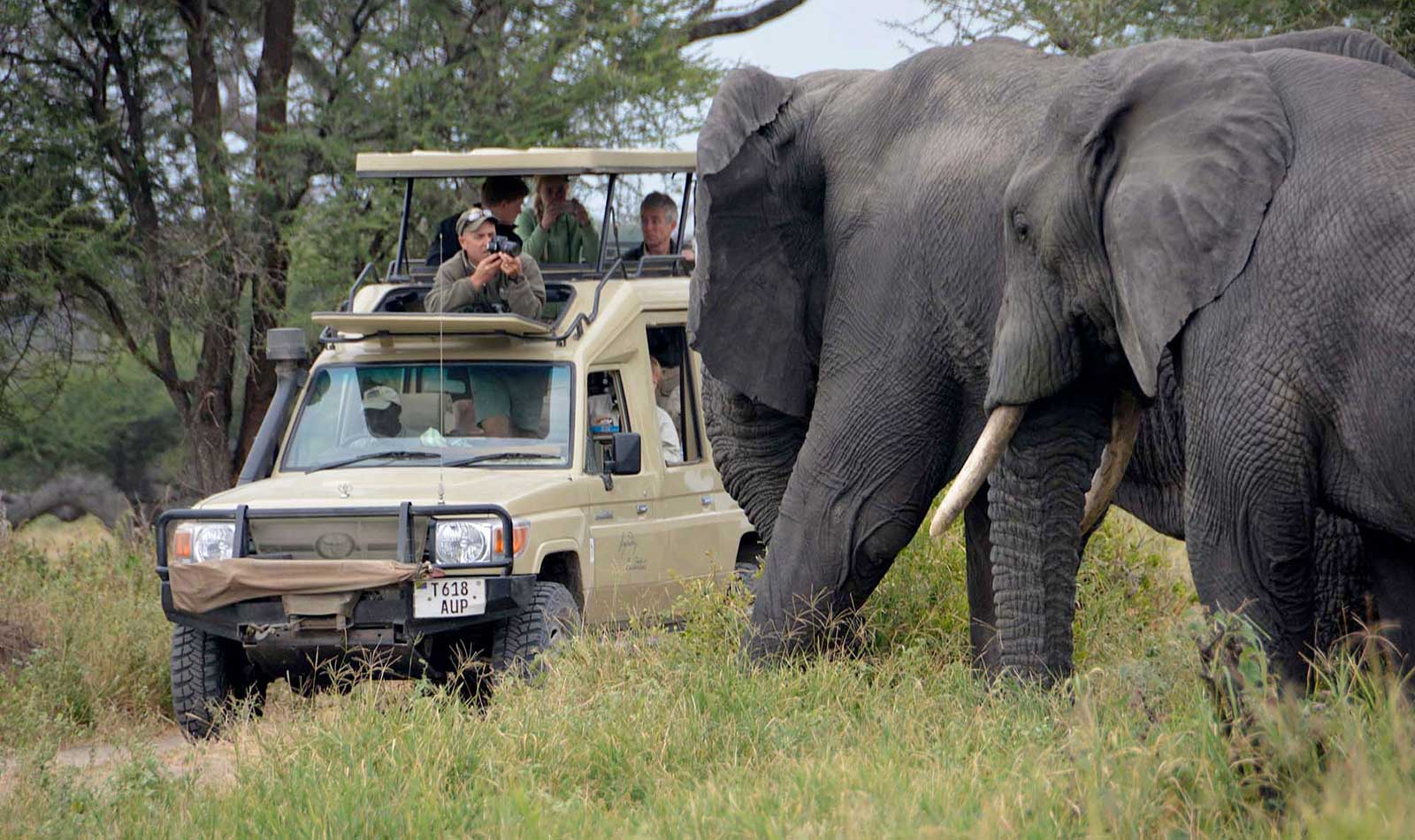
Planning a trip to Tarangire National Park is exciting — but like any safari destination in Africa, preparation can greatly enhance your comfort, safety, and overall experience. Whether you’re visiting for just one day or staying for a longer safari circuit, the following travel tips will help you get the most out of your adventure in this incredible wildlife haven.
Choose the Right Season for Your Goals
The best time to visit Tarangire National Park depends on what you want to see. If your focus is large herds and high wildlife density, the dry season from June to October is ideal. During this time, animals gather around the Tarangire River in spectacular numbers, including elephants, lions, buffalo, and countless antelope species.
However, if you’re a bird lover, photographer, or simply prefer quieter experiences with fewer tourists, consider traveling during the green season from November to May. The landscape is lush and dramatic, birdlife is at its peak, and lodges often offer reduced rates.
Don’t Rush Your Visit
Many travelers pass through Tarangire National Park as a quick stop on a longer northern safari, but the park deserves more than a single day. If your schedule allows, spending 2 to 3 nights inside or near the park lets you explore less-visited regions, go on walking safaris, and enjoy golden-hour game drives without the pressure of a ticking clock.
If you’re staying inside the park, you’ll also benefit from early access to game drives at sunrise — often the best time to see predators and active wildlife.
Pack Smart for the Environment
Tarangire’s climate is typically hot during the day and cool in the mornings and evenings. Dress in neutral-colored clothing that’s breathable and quick-drying. Long sleeves and trousers help protect against sun and insects. Comfortable walking shoes, a hat, and sunglasses are must-haves.
Dust can be significant, especially during the dry season. Bring a scarf or buff to cover your nose and mouth on game drives. Don’t forget high-SPF sunscreen, insect repellent, and a reusable water bottle to stay hydrated.
For photographers, a zoom lens (200mm or more), spare batteries, and a dustproof camera bag are essential. The light in Tarangire, especially during the dry season, is ideal for dramatic shots of baobabs, elephants, and sunrises.
Respect the Wildlife and Local Culture
Tarangire National Park is a protected wilderness area, not a zoo. Always follow the guidance of your driver-guide. Stay inside the vehicle unless told otherwise, keep noise to a minimum during sightings, and never attempt to feed or approach wild animals.
If your safari includes a community visit or cultural experience, remember to engage respectfully. Ask before taking photographs of people, be curious without being intrusive, and consider supporting local artisans by buying crafts or souvenirs directly from them.
Stay in the Park if You Can
Lodges and tented camps inside Tarangire National Park offer the advantage of immersion and convenience. You’ll wake up to the sound of lions or elephants nearby, begin your game drives early, and avoid the morning rush at park gates. Many inside-the-park camps also offer guided walking safaris, night drives, and elevated views over the river or plains.
If you’re on a tighter budget, accommodations just outside the park (especially near Sangaiwe or Matete gates) can still provide excellent access and comfort.
Don’t Skip Travel Insurance
Safaris are remote experiences, often far from major hospitals or infrastructure. Comprehensive travel insurance is strongly recommended — covering not only health emergencies but also trip cancellations, flight delays, and lost luggage. Most safari operators will require proof of travel insurance before your departure.
Go with a Reputable Safari Operator
Your guide and tour company make all the difference on safari. Choose a licensed, ethical operator with experience in Tarangire National Park. A knowledgeable guide will track animals, interpret behavior, and enrich your experience beyond simply “seeing the Big Five.”
With Nextgen Safaris, you travel with expert local guides, reliable vehicles, and custom itineraries that ensure your time in Tarangire is as safe, meaningful, and rewarding as possible.
Whether you’re visiting for the elephants, the baobabs, or the sheer peace of the park’s quiet valleys, these travel tips will help you arrive prepared and leave inspired. Tarangire National Park offers an unfiltered window into Africa’s wild heart — and with the right mindset, it may just become your favorite park in Tanzania.
Frequently Asked Questions (FAQs) About Tarangire National Park
What is Tarangire National Park famous for?
Tarangire National Park is best known for its massive elephant herds, ancient baobab trees, and seasonal concentrations of wildlife during the dry season (June to October). It is also home to unique species like the fringe-eared oryx and over 550 species of birds. The park is often praised for its quiet, uncrowded game drives and authentic wilderness atmosphere.
Where is Tarangire National Park located?
Tarangire National Park is located in northern Tanzania, approximately 118 kilometers (about 2 hours) southwest of Arusha. It’s part of the popular Northern Safari Circuit, which includes Serengeti, Ngorongoro, and Lake Manyara. Tarangire lies within the Manyara Region and is easily accessed by road or by air through Kuro Airstrip.
How do you get to Tarangire National Park?
You can get to Tarangire National Park either by road or air:
- By road: It’s a 2–2.5 hour drive from Arusha along paved roads.
- By air: Fly-in safaris land at Kuro Airstrip inside the park from Arusha, Serengeti, Zanzibar, or Dar es Salaam.
Most visitors travel by 4×4 safari vehicles, either as part of a private or group tour.
What animals can you see in Tarangire National Park?
Tarangire National Park is home to elephants, lions, leopards, cheetahs, buffalo, zebras, giraffes, wildebeests, warthogs, and many antelope species like impalas and waterbucks. Unique species include the fringe-eared oryx and the long-necked gerenuk. Birdwatchers can enjoy sightings of over 550 bird species, including hornbills, bee-eaters, and lovebirds.
When is the best time to visit Tarangire National Park?
The best time to visit Tarangire National Park is during the dry season (June to October), when wildlife gathers in large numbers around the Tarangire River. This is peak time for elephant herds and predator sightings. The green season (November to May) offers lush scenery, great birdwatching, fewer tourists, and lower lodge rates.
How much does it cost to enter Tarangire National Park?
As of current TANAPA rates, the entry fee for foreign non-residents is:
- $82.60 per adult per day (including 18% VAT)
- $23.60 per child (5–15 years)
Children under 5 enter free. Concession fees apply if you stay inside the park ($59 per person per night).
These fees are usually included in guided safari packages through reputable operators like Nextgen Safaris.
Is Tarangire National Park good for a one-day safari?
Yes, Tarangire National Park is one of the best parks in Tanzania for a one-day safari due to its close location to Arusha and the high concentration of wildlife, especially elephants. In a single day, visitors often see lions, giraffes, zebras, and many other species in a scenic and peaceful setting.
Can I see the Big Five in Tarangire National Park?
You can see four of the Big Five in Tarangire National Park: lions, leopards, buffalo, and elephants. However, rhinoceroses are not present in Tarangire. To complete the Big Five, many visitors combine Tarangire with a trip to Ngorongoro Crater, where black rhinos are more easily found.
Are night drives and walking safaris allowed in Tarangire?
Yes, but only from certain lodges. Night game drives and walking safaris are permitted in designated zones of Tarangire National Park, typically when booked through camps that are located inside or adjacent to the park. These activities offer a unique way to see nocturnal wildlife and learn about the park’s ecosystems at ground level.
What makes Tarangire different from Serengeti?
Tarangire National Park is smaller and more intimate than Serengeti, with fewer crowds and massive elephant populations. The Serengeti is famous for the Great Migration and vast plains, while Tarangire is known for its dramatic dry-season gatherings, baobab trees, and rare species. Both are world-class, but Tarangire offers a quieter, often more relaxed safari experience.
Book Your Tarangire Safari with Nextgen Safaris
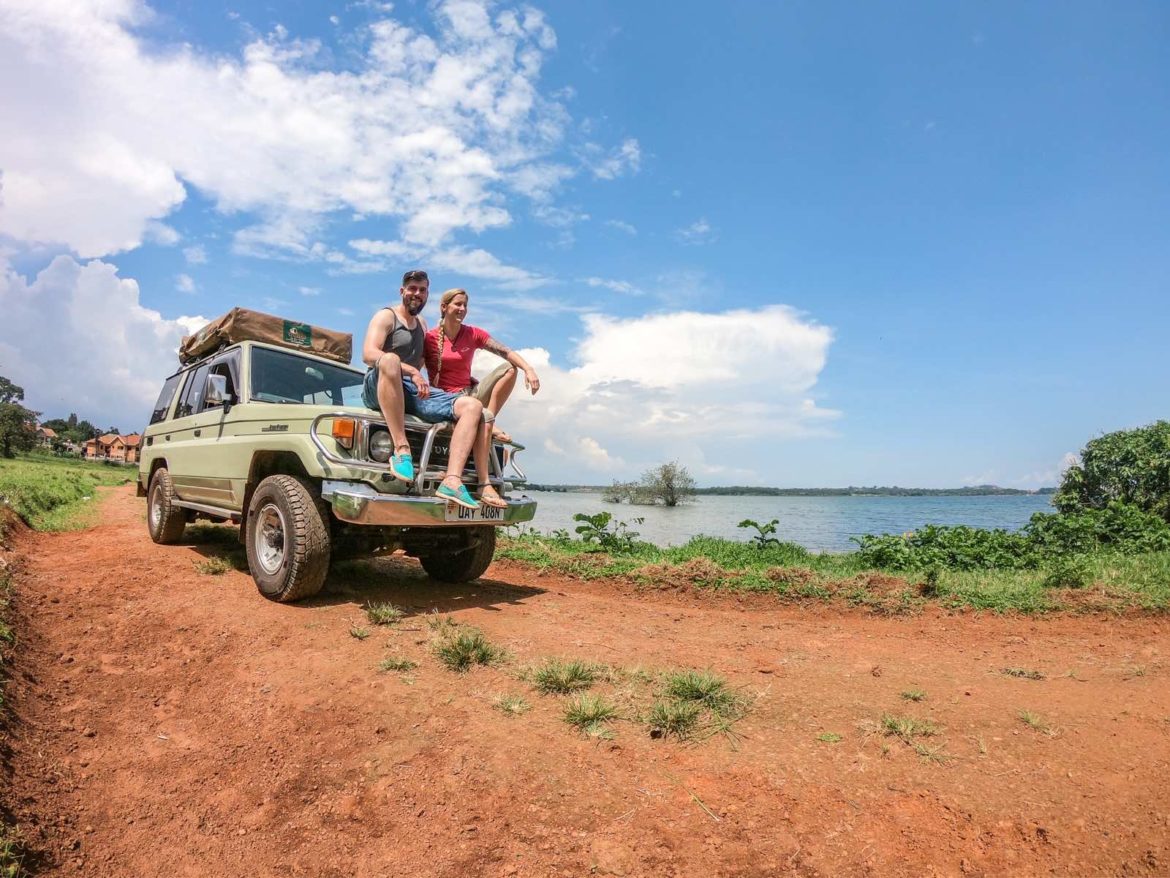
Now that you’ve explored the beauty, wildlife, logistics, and hidden secrets of Tarangire National Park, it’s time to turn your dream safari into reality. Whether you’re planning a quick 1-day escape from Arusha, a detailed 5–7 day circuit through Tanzania’s northern parks, or a custom honeymoon or photography trip, Nextgen Safaris is here to guide your journey.
We are a leading East African safari operator with deep roots in Tanzania and a commitment to personalized, ethical travel. With expert driver-guides, reliable safari vehicles, and carefully selected lodges, we take care of everything — so you can focus on what matters most: experiencing the wild heart of Tarangire National Park.
Why Choose Nextgen Safaris for Your Tarangire Adventure?
- Custom itineraries designed around your budget, interests, and travel dates
- Expert local guides with deep knowledge of Tarangire’s wildlife and history
- Flexible safari options – group joining, private, or luxury fly-in safaris
- 24/7 support before, during, and after your trip
- Trusted logistics – from airport transfers to lodge bookings and park permits
- Sustainable travel – we support conservation and local communities
Whether you’re traveling solo, with family, or as a couple seeking something unique, we’ll help you experience Tarangire National Park the way it should be: wild, personal, and unforgettable.
Start Planning Now
📩 Email: info@nextgensafaris.com
🌍 Website: www.nextgensafaris.com
📞 WhatsApp: +256 781 282 344
Let us create your perfect safari itinerary to Tarangire National Park and beyond. Because when you travel with Nextgen Safaris, you don’t just visit Africa — you connect with it.
Recent Posts
Last Minute Deals
Quick booking process
+49 1575 4711313





